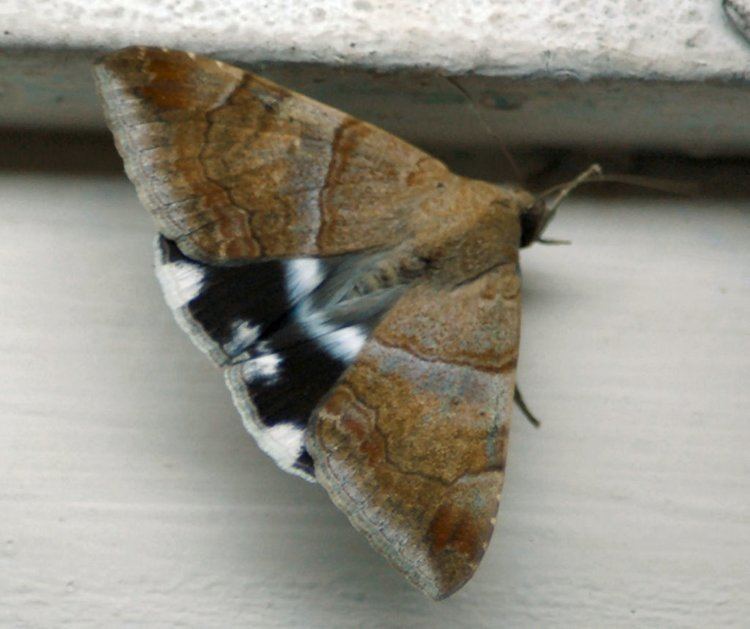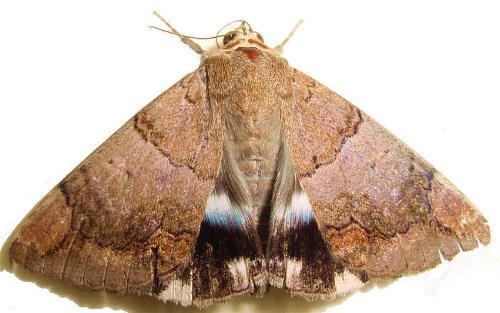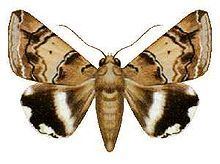Rank Species | Genus Achaea Higher classification Achaea | |
 | ||
Similar Insect, Butterflies and moths, Noctuidae, Mocis frugalis, Achaea serva | ||
Achaea janata, the castor semi-looper or croton caterpillar, is an erebid moth, the caterpillars of which are termed 'semi-loopers' due to their mode of locomotion. It is found from the Indo-Australian tropics and subtropics, extending south to New Zealand and east through the Pacific archipelagoes to Easter Island. It is a major pest of castor throughout the world.
Contents

Description

Wingspan is about 60-70mm. Pale reddish brown body. Fore wings with prominent markings. A short sub-basal waved line and an obliquely waved antemedial and excised postmedial lines present. Postmedial lines are often black suffused inside them. A speck found at end of cell. A diffuse rufous band runs beyond the postmedial line, Hind wings black with medial white band. Three large white spots can be seen on outer margin, with whitish cilia. Ventral side grey suffused. Fore wings with an oblique white postmedial band not reaching the costa. Two crenulate medial lines found on each wing.
Eggs are small, spherical with a greenish color. Pupa is whitish-green.

Larva bluish grey in color speckled with blue-black. Head black-striped. Lateral and sub-lateral yellowish bands with intervening blue-grey line. A dorsal black stripe bordered by reddish-white spots between fourth and fifth somites. There is a pair of dorsal red tubercles on anal somite. Spiracles and fore legs are red. Four larval instars completed before pupal stage.

They feed on Excoecaria cochinchinensis (Euphorbiaceae), castor oil plant (Ricinus communis), both Brassica and Ficus species and many more crops like Arachis hypogaea, Citrus, Corchorus, Dalbergia sissoo, Dodonaea viscosa, Euphorbia hirta, Glycine max, Lagenaria siceraria, Punica granatum, Rosa chinensis, Solanum lycopersicum, Tamarindus indica, Theobroma cacao, Vigna mungo and Ziziphus mauritiana.
Attack and control
As they feed off the castor oil plant they may be extremely poisonous and should be avoided at all costs. Caterpillars damage foliage, results defoliation and reduction of photosynthesis process. They also attack stems and bore into them, and finally the whole plant wilts and dies.
Controlling mainly include mechanical, biological and chemical methods. Hand picking of late instars and usage of pheromone traps and light traps to adults are effective. Many parasitoids are used in biological control. Eggs can destroy using Trichogramma evanescens. Microplitis maculipennis are effective against caterpillars. Chalcid species Euplectrus and another a braconid, Rhogas are also used. In chemical control, Quinalphos, Chlorpyrifos, carbaryl, monocrotophos, endosulphan sprays are used. Neem seed kernel extract sprays are used to destroy eggs.
